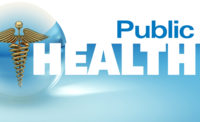Workplace surveillance fails to detect respiratory diseases

In 1981, a worker at the Maxwell House coffee factory in Houston died from what was reported at the time to be "bronchial asthma." She was 46, a mother of three. In 1982, another worker at the plant died — from the same thing.
The deaths were not recorded in a national database of occupational illnesses that could have alerted public health specialists to a potential problem. Nobody linked the sicknesses to the workplace.
Several years later, in 1990, workers at the same plant wondered if they were being exposed to something hazardous in the air. Coffee dust? The chemical used to decaffeinate coffee? A lot of workers had chronic coughs. Quite a few, it seemed, were getting cancer while churning out Maxwell House coffee.
When scientists from the U.S. Centers for Disease Control and Prevention came to investigate, they found the workers were right. Researchers pulled the death certificates of 67 employees who had died during the previous dozen years and discovered elevated cancer rates among a segment of workers at the plant. Especially prevalent: lung cancer.
The CDC could not pinpoint an exact cause but recommended Maxwell House put engineering controls in place to "control hazards to the extent feasible." Officials also suggested the company monitor workers' health and inform them of the dangers of coffee dust.
The file was closed.
Workers at another Houston roasting and processing plant had also worried about their health and asked the CDC in the 1980s to examine their concerns, according to an investigation by the Milwaukee Journal Sentinel.
Complaints were similar — some workers coughed excessively; others were short of breath; eye, nose and throat irritation was common.
And workers from at least two additional coffee plants in other states would eventually seek help from the CDC. What could be causing severe and sometimes fatal lung and respiratory diseases? How widespread were the problems?
Nearly 35 years later, as the coffee industry booms with boutique roasters and more workers than ever are at risk — most of them unknowingly — the questions remain unanswered.
"We don't have a system in place in the United States for connecting the dots," said Robert Harrison, a physician and occupational medicine specialist at the University of California, San Francisco Medical Center.
A system that tracked patients by occupation could have helped doctors spot and prevent — decades ago — what the Journal Sentinel has now uncovered: Workers from multiple coffee plants with signs of respiratory illness that medical experts suspect could be linked to their jobs roasting and grinding coffee.
The discovery is part of an ongoing investigation, Gasping for Action, that has exposed how diacetyl — a chemical known for destroying lungs of microwave popcorn workers in the early 2000s — also poses risks to coffee workers and e-cigarette users across the country.
Although more than a dozen epidemiological and animal studies in the past 15 years have concluded that diacetyl devastates the lungs — and experts deem it one of the most toxic chemicals they have ever seen — government regulators and coffee companies have done little to protect workers from it, according to the Journal Sentinel.
Despite advances in medicine and data collection and analysis in recent decades, the nation's workplace-illness surveillance system remains incapable of detecting clusters of medical conditions related to specific jobs, the Journal Sentinel has found.
The CDC's National Occupational Mortality Surveillance database lumps coffee roasters with meat, fish and tobacco workers. The coffee industry as a whole is coded with seafood and other miscellaneous food operations.
Federal agencies don't require states to include occupational information on death certificates. States can volunteer to collect the information and share it with NIOSH — the CDC's research arm. Only 17 states do.
As a result, deaths are not traced by specific job or even industry.
Nor are illnesses. The U.S. Bureau of Labor Statistics, also tasked with tracking workplace injuries and illnesses, relies on data supplied by employers. Studies show that chronic illnesses, especially, are under-reported. And that system, too, uses the same broad coding categories for jobs and industries.
Public health experts have mounted an effort in recent years to have occupation and industry included in electronic medical records, a move the U.S. Department of Health and Human Services has not adopted.
Meanwhile, a handful of fairly simple solutions exist to protect coffee workers. Air sampling, improved ventilation and medical monitoring could significantly reduce risks to the more than 600,000 people in the United States who work around coffee every day.
"We're floundering around with these chemicals in the workplace as if it was the 1830s," said Allen Parmet, an occupational medicine specialist credited with helping identify the lung disease in the popcorn workers. "Unless the patient comes in and says, 'I'm a coffee worker, I'm exposed to diacetyl, I potentially have bronchiolitis obliterans and here's the paperwork' — unless that happens — nobody gets it. They'll just treat him for asthma or smoker's cough.
"If we had the will, we could fix it."
The CDC outlined various ways workers could be protected. The National Coffee Association — which initially denied that naturally occurring diacetyl could be a problem — vowed to alert its members and encourage them to monitor their workplaces.
Coffee factories have little incentive to test the air, since OSHA does not have any regulations limiting workplace exposure to diacetyl or 2,3-pentanedione, another lung-damaging compound released in coffee processing.
OSHA has known of the seriousness since at least 2006, when clusters of microwave popcorn workers became ill, but has failed to implement regulations. NIOSH has a draft proposal for a recommended safety level, but it has not moved forward. The agency has been saying for more than a year that the proposal is in the final review stage.
Adequate ventilation is a key factor in reducing occupational exposure to chemicals such as diacetyl. Other engineering controls that can mitigate risk are enclosing the roasting and grinding processes, increasing air exchange and wearing respirators, according to NIOSH.
Source: Milwaukee Journal-Sentinel www.jsonline.com
Looking for a reprint of this article?
From high-res PDFs to custom plaques, order your copy today!








